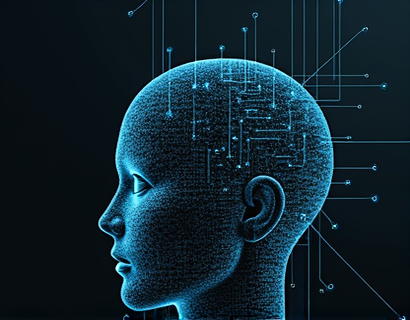AI-Powered Chat Interface: Your Instant Resource for Comprehensive ICU Knowledge and Enhanced Healthcare Decisions
The healthcare landscape is rapidly evolving, and with it, the need for efficient communication and access to vital information has never been more critical. In the realm of Intensive Care Units (ICUs), where every second counts, an AI-powered chat interface emerges as a transformative tool. This innovative technology provides healthcare professionals, caregivers, and patients with instant access to comprehensive ICU knowledge, enabling informed healthcare decisions.
Understanding the Role of AI in Healthcare
Artificial Intelligence (AI) has made significant strides in various sectors, and healthcare is no exception. AI technologies are being integrated into numerous applications, from diagnostics to patient management. One of the most promising applications is the AI-powered chat interface, which serves as a bridge between complex medical information and users seeking clarity.
What is an AI-Powered Chat Interface?
An AI-powered chat interface is a digital platform that utilizes natural language processing (NLP) and machine learning algorithms to interact with users in real-time. This technology can understand and respond to queries, providing accurate and relevant information about ICU services, procedures, and best practices. By simulating human-like conversations, these interfaces make it easier for users to navigate the complexities of healthcare.
Benefits of AI-Powered Chat Interfaces in ICU Settings
AI chat interfaces offer numerous advantages in ICU settings, enhancing communication and decision-making processes. Here are some key benefits:
- Instant Access to Information: Healthcare professionals and caregivers can quickly obtain information about ICU protocols, treatment options, and patient care guidelines, reducing the time spent searching for answers.
- Improved Communication: The chat interface facilitates better communication between healthcare providers, patients, and families, ensuring that everyone is on the same page regarding treatment plans and expectations.
- Enhanced Decision-Making: With immediate access to comprehensive knowledge, healthcare professionals can make informed decisions that positively impact patient outcomes.
- Support for Caregivers: Family members and caregivers can use the chat interface to understand the complexities of ICU care, helping them feel more empowered and involved in the patient's journey.
- 24/7 Availability: Unlike traditional resources, an AI chat interface is available around the clock, providing users with support whenever they need it.
How AI Chat Interfaces Enhance Patient and Caregiver Communication
Effective communication is crucial in healthcare, especially in high-stress environments like the ICU. AI chat interfaces enhance communication in several ways:
1. Real-Time Responses
Patients and caregivers often have urgent questions about treatment plans, medication, and procedures. An AI chat interface can provide real-time responses, alleviating anxiety and ensuring that users have the information they need when they need it.
2. Personalized Interactions
AI chat interfaces can be programmed to recognize individual user profiles, allowing for personalized interactions. This means that caregivers can receive tailored information based on their loved one's specific condition, enhancing the relevance of the information provided.
3. Multilingual Support
In diverse healthcare settings, language barriers can hinder effective communication. AI chat interfaces can support multiple languages, ensuring that non-English speaking patients and caregivers can access vital information without confusion.
4. Educational Resources
AI chat interfaces can serve as educational tools, providing users with resources about ICU services, common procedures, and patient rights. This empowers patients and caregivers to engage more actively in their healthcare journey.
Key Features of an AI-Powered Chat Interface for ICU Knowledge
To maximize the benefits of an AI chat interface in ICU settings, certain features are essential:
- Natural Language Processing: The ability to understand and interpret user queries in natural language is crucial for effective communication.
- Comprehensive Knowledge Base: The chat interface should be equipped with a vast database of information related to ICU services, treatment protocols, and patient care guidelines.
- Integration with Healthcare Systems: Seamless integration with electronic health records (EHR) and other healthcare systems ensures that the information provided is accurate and up-to-date.
- User-Friendly Interface: A simple and intuitive interface encourages users to engage with the chat system, making it accessible to individuals with varying levels of tech-savviness.
- Feedback Mechanism: Incorporating a feedback mechanism allows users to report inaccuracies or suggest improvements, enhancing the system's reliability over time.
Challenges and Considerations in Implementing AI Chat Interfaces
While the benefits of AI chat interfaces are significant, there are challenges and considerations to keep in mind:
1. Data Privacy and Security
Healthcare data is sensitive, and ensuring the privacy and security of user information is paramount. Implementing robust security measures is essential to protect patient data.
2. Accuracy of Information
The effectiveness of an AI chat interface relies on the accuracy of the information it provides. Regular updates and validation of the knowledge base are necessary to maintain reliability.
3. User Acceptance
Some users may be hesitant to rely on AI for healthcare information. Educating users about the benefits and capabilities of the chat interface can help increase acceptance.
4. Continuous Improvement
AI technologies are constantly evolving. Continuous monitoring and improvement of the chat interface are necessary to keep pace with advancements in healthcare and technology.
Future Trends in AI-Powered Chat Interfaces for Healthcare
The future of AI-powered chat interfaces in healthcare looks promising. Here are some trends to watch:
1. Enhanced Personalization
As AI algorithms become more sophisticated, chat interfaces will be able to provide even more personalized interactions, tailoring responses based on individual patient histories and preferences.
2. Integration with Wearable Technology
With the rise of wearable health technology, AI chat interfaces may integrate data from these devices, providing real-time insights and recommendations based on a patient's current health status.
3. Advanced Predictive Analytics
AI chat interfaces may leverage predictive analytics to anticipate user needs and provide proactive support, enhancing the overall user experience.
4. Broader Applications Beyond ICU
While the focus is currently on ICU services, the applications of AI chat interfaces will likely expand to other areas of healthcare, including outpatient services, chronic disease management, and preventive care.
Conclusion
The integration of AI-powered chat interfaces in healthcare, particularly in ICU settings, represents a significant advancement in how information is accessed and communicated. By providing instant access to comprehensive ICU knowledge, these interfaces empower healthcare professionals, caregivers, and patients to make informed decisions. As technology continues to evolve, the potential for AI chat interfaces to enhance healthcare communication and decision-making will only grow, ultimately leading to improved patient outcomes and a more efficient healthcare system.










































